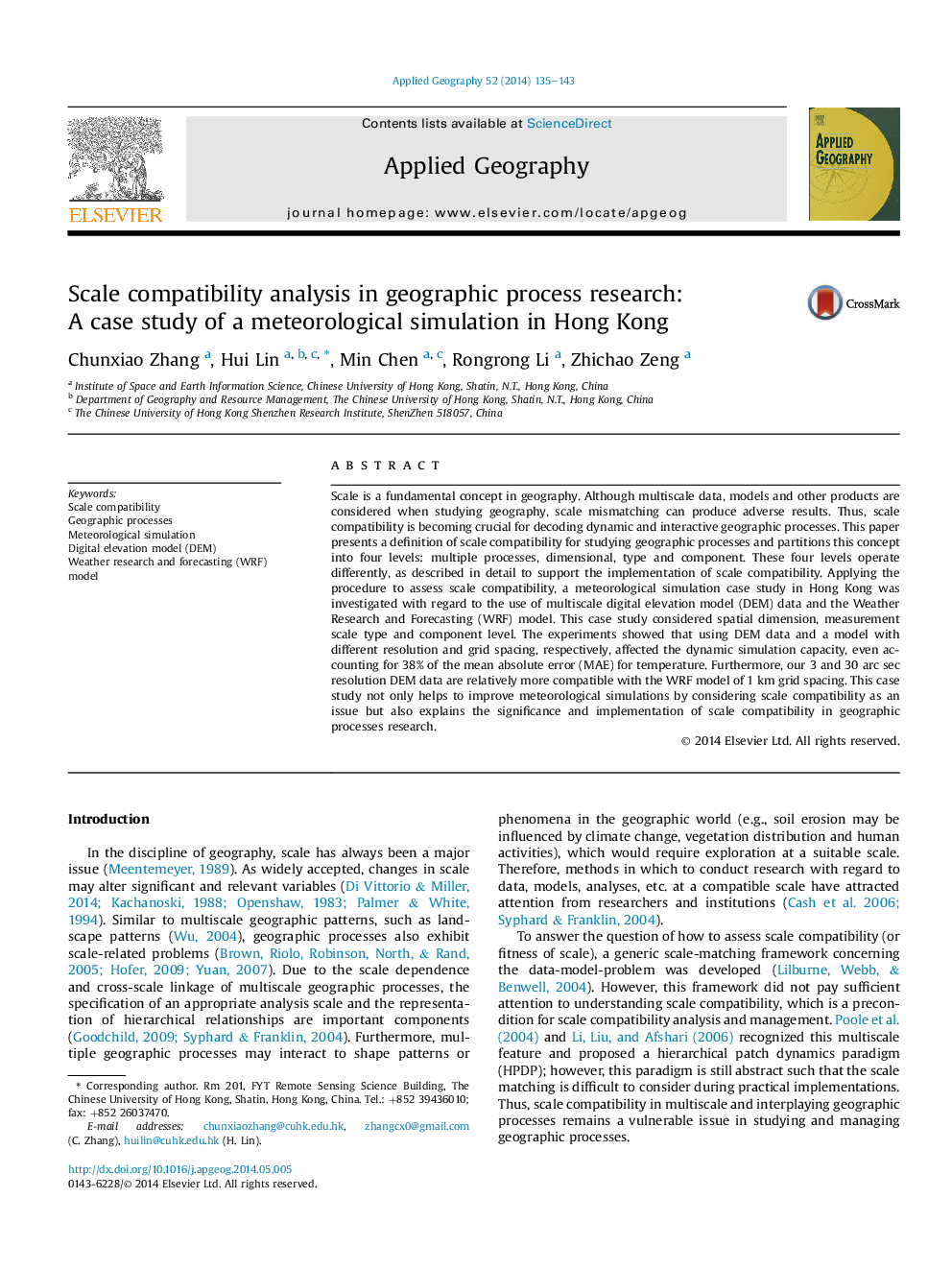| Article ID | Journal | Published Year | Pages | File Type |
|---|---|---|---|---|
| 6538763 | Applied Geography | 2014 | 9 Pages |
Abstract
Scale is a fundamental concept in geography. Although multiscale data, models and other products are considered when studying geography, scale mismatching can produce adverse results. Thus, scale compatibility is becoming crucial for decoding dynamic and interactive geographic processes. This paper presents a definition of scale compatibility for studying geographic processes and partitions this concept into four levels: multiple processes, dimensional, type and component. These four levels operate differently, as described in detail to support the implementation of scale compatibility. Applying the procedure to assess scale compatibility, a meteorological simulation case study in Hong Kong was investigated with regard to the use of multiscale digital elevation model (DEM) data and the Weather Research and Forecasting (WRF) model. This case study considered spatial dimension, measurement scale type and component level. The experiments showed that using DEM data and a model with different resolution and grid spacing, respectively, affected the dynamic simulation capacity, even accounting for 38% of the mean absolute error (MAE) for temperature. Furthermore, our 3 and 30 arc sec resolution DEM data are relatively more compatible with the WRF model of 1Â km grid spacing. This case study not only helps to improve meteorological simulations by considering scale compatibility as an issue but also explains the significance and implementation of scale compatibility in geographic processes research.
Related Topics
Life Sciences
Agricultural and Biological Sciences
Forestry
Authors
Chunxiao Zhang, Hui Lin, Min Chen, Rongrong Li, Zhichao Zeng,
